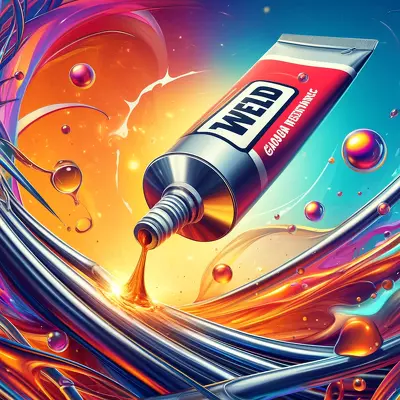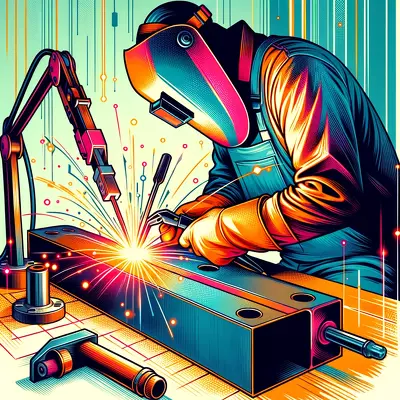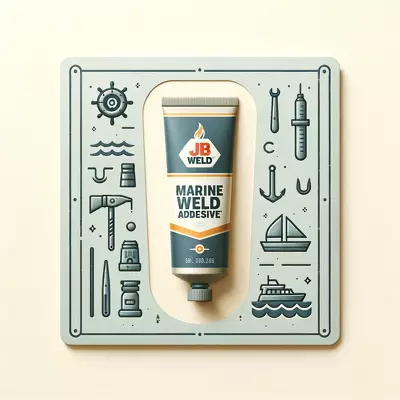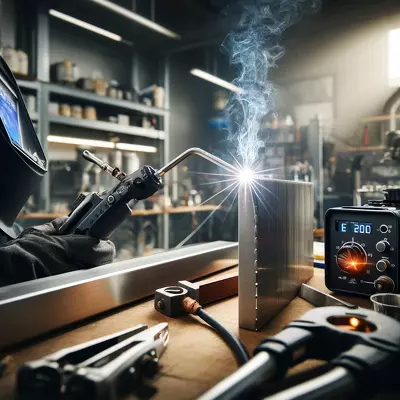Mastering the Art of Refinement: How to Sand JB Weld for a Flawless Finish

JB Weld, known for its robust bonding capabilities, is often a go-to solution for tough repairs. However, users frequently wonder if they can sand JB Weld to achieve a smoother finish. The process involves letting the JB Weld cure fully before using the right sanding techniques to refine the surface. This approach ensures both strength and aesthetics are maintained in your repair projects.
I. Introduction to Sanding JB Weld
A. Overview of JB Weld and Its Common Uses
JB Weld is a renowned two-part epoxy adhesive that offers an incredibly strong bond for various materials, including metal, plastics, and ceramics. It has been a staple in both household and industrial applications, where a permanent bond is crucial. Common uses range from automotive repairs to fixing household items and plumbing solutions.
B. Importance of Surface Finishing in Repairs
Surface finishing is a critical step in the repair process, especially when using adhesives like JB Weld. It enhances the appearance of the repaired item, ensures uniformity, and helps maintain the integrity of the material. Proper sanding can also increase the adhesion of paints or other coatings applied post-repair.
II. Preparing to Sand JB Weld
A. Necessary Conditions for Sanding
Before attempting to sand the JB Weld, it is essential to ensure that the epoxy has fully cured. The curing process is temperature-dependent but generally takes about 24 hours at room temperature. The surface should be clean and free of oils or other contaminants for effective sanding.
B. Tools and Materials Needed
To sand JB Weld effectively, you will need sandpaper with various grits, a sanding block to maintain even pressure, and safety equipment such as gloves and a dust mask. Starting with a coarser grit and moving to finer grits allows for gradual smoothing without damaging the surface.
III. Step-by-Step Guide to Sanding JB Weld
A. Waiting for JB Weld to Cure
Patience is key when waiting for JB Weld to cure fully. This ensures the material has reached its maximum strength and stability, making it safer and more effective to sand.
B. Selecting the Correct Grit Sandpaper
The choice of sandpaper grit should be based on the desired smoothness of the finish. Begin with a coarse grit to remove any excess epoxy quickly, and then transition to medium and fine grits for a smooth finish.
C. Techniques for Effective Sanding
Use a circular or cross-hatch sanding motion to remove material evenly. Applying steady, moderate pressure allows for better control over the sanding process and prevents gouging or uneven surfaces.
IV. Tips for Achieving the Best Results
A. Sanding for Aesthetics vs. Functionality
Decide whether the sanding is for aesthetic purposes or practical functionality. Aesthetical sanding might require a finer grit to achieve a glossy finish, whereas functional sanding might focus on preparing the surface for further treatments like painting.
B. Handling Different Shapes and Surfaces
For irregular shapes or hard-to-reach areas, consider using flexible sanding tools or custom-shaped sanding blocks. This adaptability ensures that all surfaces are evenly sanded, maintaining the integrity and aesthetics of the repair.
V. FAQs
Q: Can you sand JB Weld immediately after application?
A: No, JB Weld needs to be completely cured, which typically takes about 24 hours at room temperature before sanding.
Q: What is the best sandpaper grit for sanding JB Weld?
A: For initial sanding, start with a coarser grit of around 80-100 and finish with a finer grit of 200-400 for a smooth surface.
Q: Is it necessary to wear protective gear while sanding JB Weld?
A: Yes, it is recommended that you wear a dust mask and safety glasses to protect yourself from fine particles and dust.
Q: Can you paint over sanded JB Weld?
A: Yes, once JB Weld is properly sanded and cleaned, it can be painted to match the surrounding surfaces.
Q: How do you know when JB Weld is ready to be sanded?
A: JB Weld is ready to be sanded when it is completely hard to the touch and no longer tacky.
Q: Can you use a power sander on JB Weld?
A: Yes, a power sander can be used for large surfaces, but start with low pressure to avoid removing too much material.
Q: How can you prevent dust when sanding JB Weld?
A: Using wet sanding techniques can help minimize dust production during the sanding process.
Q: Can JB Weld Steel Stick be used for automotive repairs?
A: Yes, JB Weld Steel Stick is specifically formulated for metal repairs and is ideal for automotive applications, such as fixing engine blocks, metal parts, and various tools.
Q: Is JB Weld MarineWeld suitable for repairing boats?
A: Absolutely. JB Weld MarineWeld is designed for marine environments and excels in repairing boats by providing strong, waterproof seals that can withstand constant exposure to water and harsh marine conditions.
Q: Can J-B Weld be used to repair a plastic gas tank?
A: Unfortunately, J-B Weld products are generally not recommended for repairing plastic gas tanks as they do not adhere well to certain plastics, such as polyethylene and polypropylene, commonly found in them. Here, we’ll explore effective alternatives that provide a durable solution for your repair needs.
VI. Conclusion
A. Summary of Key Points
Sanding JB Weld is an effective way to finish repairs, ensuring both functional integrity and aesthetic appeal. Proper curing, correct tools, and appropriate techniques are crucial for the best results.
B. Final Recommendations
Always allow JB Weld to fully cure before sanding, and choose the right sandpaper grit for your specific needs. By following the step-by-step guide and tips provided, you can achieve a professional-quality finish on any JB Weld repair.
VII. Suggested Readings
Sanding and finishing are essential skills for anyone involved in repairs or crafting. The following books provide a deeper dive into these techniques:
- “The Complete Guide to Finishing Woods” by Stephen Lamont is a comprehensive book detailing various finishing techniques, including sanding, staining, and sealing.
- “Epoxy Resins: Chemistry and Technology,” edited by Clayton May, is an in-depth exploration of epoxy resins, with a focus on their applications and handling, including sanding and finishing.
- “Practical Woodworker: A Comprehensive Step-by-Step Course” by Stephen Corbett: This book includes techniques for working with wood and other materials, including proper sanding methods to achieve flawless finishes.
These resources will help you expand your knowledge and enhance your skills in material finishing, providing you with the expertise to tackle any project with confidence.






